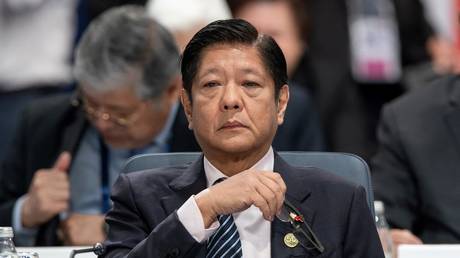ARTICLE AD BOX
A Beijing-funded shipping canal will reduce regional reliance on Vietnam, a fellow communist state and traditional rival
China and Vietnam, two Communist neighbors with a shared revolutionary heritage, exist in a state of strategic unease. They are not enemies, and have significant trade connections, but neither are they friends.
This is because Vietnamese nationalism views Beijing with a suspicion that is historically rooted, with a legacy of seeking to sustain its independence against the Chinese dynasties of old. As China has risen again, this sentiment in Hanoi has increased, especially with the Sino-Vietnamese war of 1978 and overlapping territorial claims in the South China Sea, known to Vietnamese as the East Sea.
Similarly, China is wary of the idea of Vietnam potentially aligning with a foreign power as part of a containment coalition against it, itself an instigator of conflict. Although the two countries are not currently in a state of hostility and have worked to improve bilateral relations amid these strong points of contention, this mutual suspicion persists, which leads to them continuing to hedge against one another subtly, even as they co-operate on some projects, in an unspoken competition. For example, one may note Vietnam recently forming parallel strategic partnerships with the US, Australia, and Japan, moves which were unthinkable decades ago.
As Vietnam hedges its bets, China is also broadening its strategic options. Beyond the South China Sea/East Sea controversy, Beijing is making efforts to woo two Southeast Asian countries which traditionally have been reliant on and influenced by Vietnam: Laos and Cambodia. Owing to the reality of geography, Vietnam has had the upper hand against these countries, as it effectively “wraps itself” around the east coastline of Southeast Asia. This renders Laos landlocked, while Cambodia has only a small portion of coastline. This means that, for most intents and purposes, Vietnam has been the two countries’ primary route of supply and access point to the sea.
Both have resented being dominated by Vietnam and, as a result, there has been a decades-long struggle for influence between Beijing and Hanoi over them, including Beijing’s support in the 1970s for the Khmer Rouge regime in Cambodia. However, as China has ascended, the balance of power soon turned in its own favor, as it has unlocked game-changing resources and projects that are now rewriting the geographical limitations of this region via the Belt and Road initiative (BRI). As part of the BRI, China first gave landlocked Laos a new lifeline by building the China-Laos Railway.
Read more The US is cultivating an antagonist to China in Beijing’s own backyard
The US is cultivating an antagonist to China in Beijing’s own backyard
Opened in 2021, this high-speed and commercial freight route, and accompanying expressway, connects the Laotian capital Vientiane with China, meaning the country no longer must rely on Vietnam to access ports. This has allowed Laos to not only export goods to China but also to become an intermediary between China and Thailand, with more railways to form a complete route between Beijing and Bangkok underway. The China-Laos railway is a strategic gamechanger, but more important than that is the new Techo Funan Canal in Cambodia.
This canal is a China-funded and contracted mega waterway that will span over 110 miles (180 km) from the Mekong River at Phnom Penh to the sea, with construction set to start this year. By building this canal, Cambodia now gets to bypass the Mekong Delta, which is in Vietnamese territory and subsequently transforms its capital city into a direct port. This canal strengthens China-backed Cambodia and deals a strategic blow to Vietnam, weakening its hold over its neighbor. Cambodia is thus transformed, from a historical subordinate to Hanoi into a commercial competitor. It is no surprise that the Techo Funan Canal has attracted Vietnamese fears and opposition.
When all of this is viewed together, China is effectively strengthening Laos and Cambodia at the expense of Vietnam. This is also part of Beijing’s strategy of using the BRI to integrate the interior of the continent and establish trade routes which bypass the contested waters of the South China Sea, which the US and its allies are militarizing. So, how is Hanoi reacting to these developments? The answer is, bizarrely enough, by integrating itself with China further in order to further compete with trade from China. As the saying goes, ”if you can’t beat them, join them!” On April 11, Vietnam announced it would be starting work on two high-speed railway links which would connect its northern cities with Yunnan and Guanxi provinces in China. Why? So that Vietnam can continue to promote itself as the nearest and primary overseas destination for Chinese companies, suppliers, and goods, so that it itself can be the next industrial powerhouse. Thus, to continue to hold an advantage and ensure China’s reliance on Vietnam, latch onto China’s success and therefore ensure that outbound Chinese commerce into Southeast Asian ports isn’t going to be siphoned away by what’s emerging in Cambodia.
Either way, what this shows is that the competition between Beijing and Hanoi is a complex and intermingled one, but far from hostile. The two nations have differing and conflicting objectives, but also many complimentary ones, for which it benefits them both to maintain a cordial status quo. Hanoi fears China’s presence emerging all around it, including peeling away its neighbors, which leads it to turn back to the ”Old Enemy” the US, though at the same time it is forced to admit Beijing can’t be ignored and that it continues to derive benefits by being in China’s game. Vietnam has to dine at the table while ensuring it is not the menu.
.png)
 7 months ago
3
7 months ago
3








 English (US)
English (US)